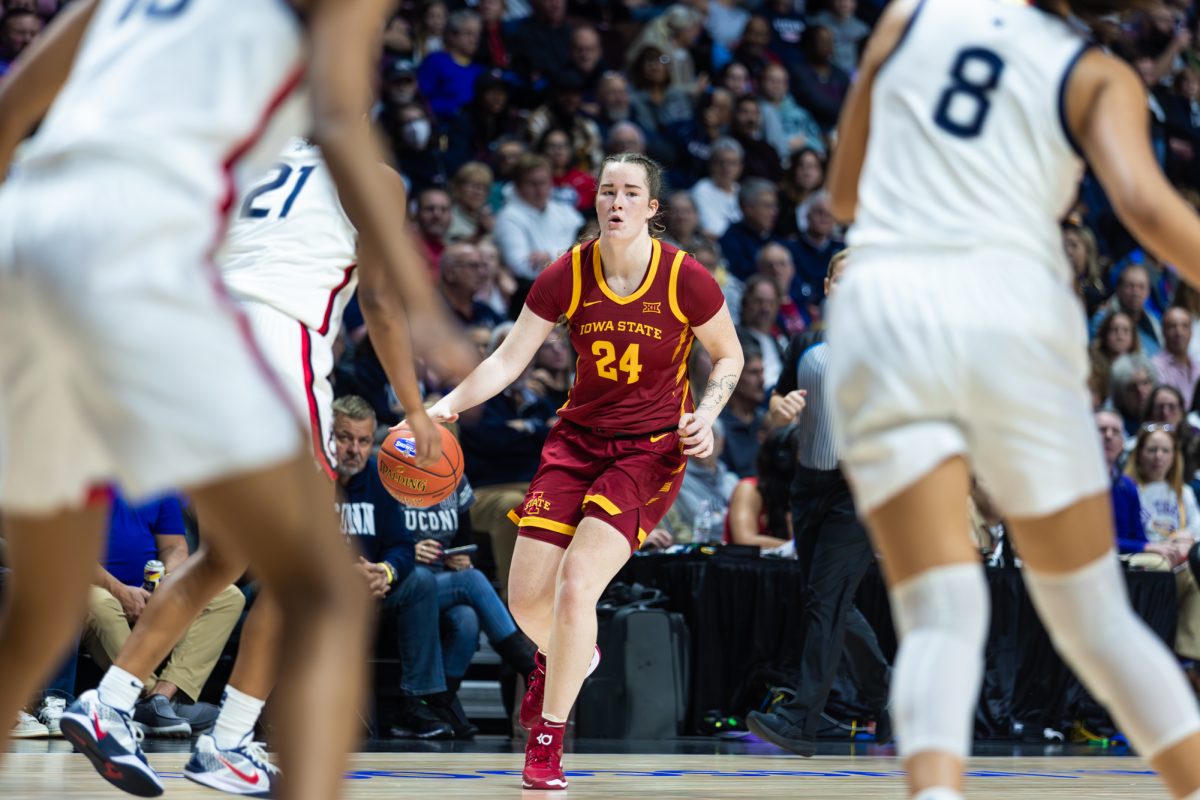The power of garbage
September 27, 2007
There is no landfill for your household garbage in Story County.
The household garbage from all over the county is collected and sent to the Resource Recovery Plant, 110 Center Ave., to help power the city of Ames.
Trash to treasure
“We take the waste and utilize it for electricity at the power plant,” said Gary Freel, assistant superintendent of the Resource Recovery Plant.
“From the time the garbage hits the conveyor belt, it takes about two to three minutes for the garbage to be shredded and separated and ready for the power plant,” said Jason Pohlman, superintendent of the Resource Recovery Plant.
Iowa State makes up approximately 9 to 10 percent of the garbage that is processed for fuel.
Iowa State, which pays the city of Ames for the processing service, picks up the garbage on campus via ISU trucks and workers.
The collection of city residents’ garbage is done by private businesses.
“Right now, the university pays about $60 per ton of garbage. However, it fluctuates every quarter,” Freel said.
Pohlman said this is usually more than it costs to put the trash in the landfill, but there are exceptions.
“There are places in Iowa that charge a very similar rate to what we have so sometimes, but not always, it’s more expensive,” he said.
Pohlman said the Resource Recovery Plant goes through about 200 tons of garbage per day, but it can vary day to day and also depending on the time of year.
The process starts with a worker, called an end loader, looking for any inappropriate material that cannot be processed.
The waste then proceeds to a hammer mill to be shredded. Once shredded, an electromagnetic conveyor belt is used to take out most of the metal, which is not usable for fuel.
In the next step, the trash is sent to a rotary discreen system where dirt, grit and sand is separated to go to the landfill. The remaining garbage then proceeds to a final shredder.
The remaining garbage is then sent to an air classifier, where light and heavy material are separated. The heavier material is sent to the landfill and the lighter material is blown through pipes to the power plant a few blocks away for fuel to the power plant.
The Ames Power Plant, 200 E. Fifth St., uses the finely chopped garbage along with coal to fuel the plant.
“Our primary fuel is coal,” Freel said. “Refuse-derived fuel will usually run no more than 15 percent.”
Recycling
The unusable metals that are separated by magnetic force are shipped to AMG Resources Corp. in Minnesota, a company that markets scrap metal and secondary steel products.
Pohlman said the plant currently separates metal objects such as steel and tin cans. There is currently a glass recycling program where the glass is crushed and used in such things as sandblasting and landscaping.
“A lot of glass is available to anyone who wants it,” Pohlman said. The plant does not ship the glass partially because of the cost.
“In aluminum, we are investigating a way to separate it, but for now it becomes fuel.”
Other materials such as plastic and paper are used for fuel.
Freel said some materials like construction waste, wood and large amounts of furniture are not accepted at the Recovery Plant. In Story County, the privately owned Ames Story Environmental Landfill, 2101 Watt St., takes the material instead of the Resource Recovery Plant.
Part of the coal-burning process leaves behind what is called fly ash, which is coal ashes that are not completely burned in the coal burner.
Mark Weldon, Ames Power Plant engineer, said the ash is collected in a silo and used in such things as concrete and sandblasting.
Powering Iowa State
The ISU Power Plant does not take in any of the garbage. Instead, it relies mostly on coal for fuel.
“We burn about 520 tons of coal a day though it varies from day to day and can also depend on the time of year,” said Mike McGraw, plant manager of the ISU Power Plant.
McGraw said the coal is transported to campus from other states.
The ISU Power Plant operates nearly twice as efficiently as the city’s plant.
“A large majority of what we put into the air is steam. Being nearly completely electric, it greatly helps reduce our pollution output,” McGraw said.
The Ames Power Plant does power some ISU facilities, but for the most part, the campus is powered by the ISU Power Plant.
“All of Central Campus is on the ISU grid, but some places farther from campus such as the research park and the Applied Sciences Complex are powered by the city. It all depends on location,” McGraw said.





